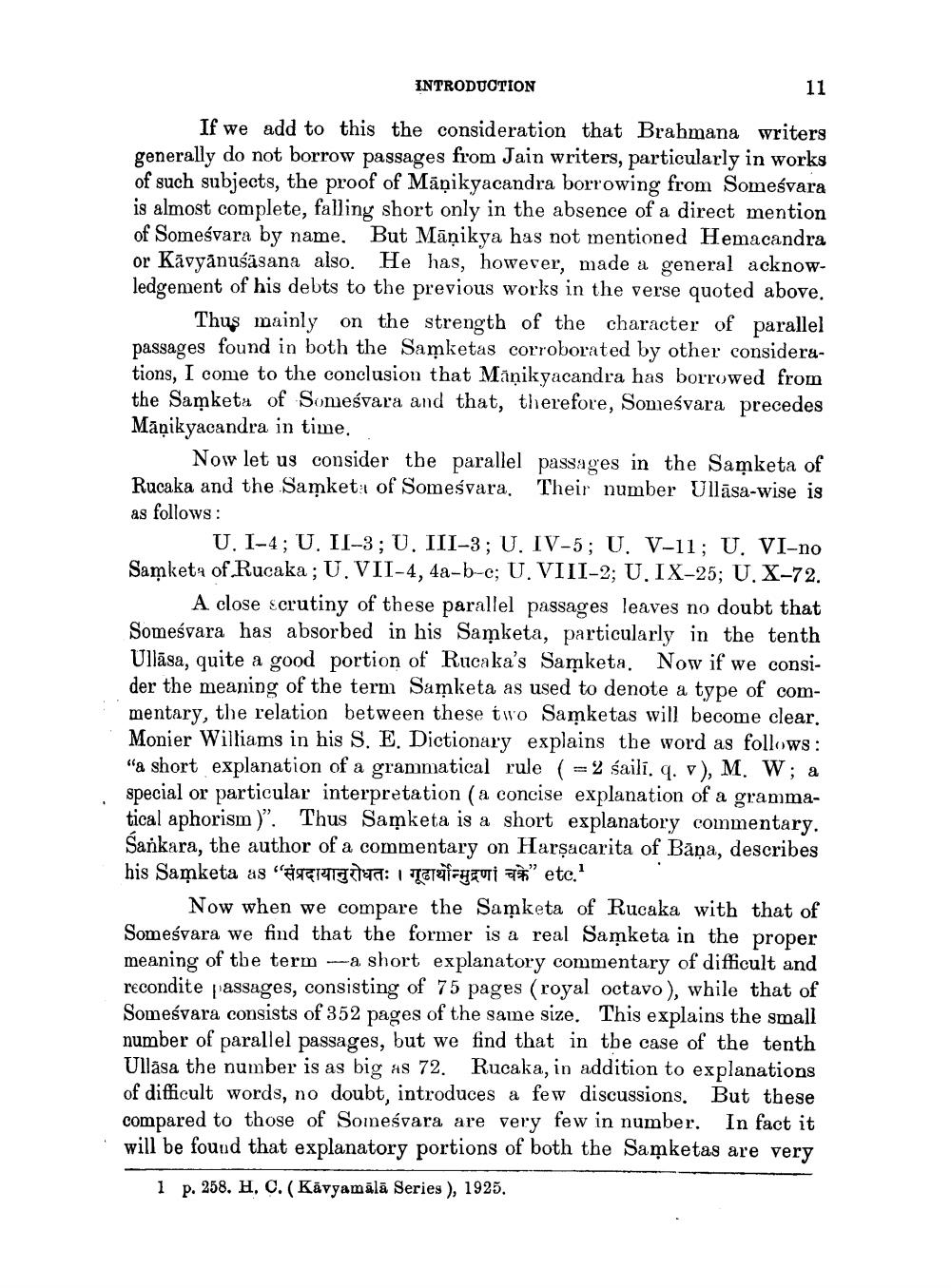________________
INTRODUCTION
11
If we add to this the consideration that Brahmana writers generally do not borrow passages from Jain writers, particularly in works of such subjects, the proof of Māņikyacandra borrowing from Someśvara is almost complete, falling short only in the absence of a direct mention of Someśvara by name. But Māņikya has not mentioned Hemacandra or Kävyänuśäsana also. He has, however, made a general acknowledgement of his debts to the previous works in the verse quoted above.
Thus mainly on the strength of the character of parallel passages found in both the Samketas corroborated by other considerations, I come to the conclusion that Māņikyacandra has borrowed from the Saņketa of Someśvara and that, therefore, Someśvara precedes Māņikyacandra in time.
Now let us consider the parallel passages in the Samketa of Rucaka and the Samketa of Someśvara. Their number Ullasa-wise is as follows:
U. 1-4; U. II-3; U. III-3; U. IV-5; U. V-11; U. VI-no Samketa of Rucaka; U. VII-4, 4a-b-c; U. VIII-2; U.IX-25; U. X-72.
A close scrutiny of these parallel passages leaves no doubt that Someśvara has absorbed in his Samketa, particularly in the tenth Ullāsa, quite a good portion of Rucaka's Saņketa. Now if we consider the meaning of the term Samketa as used to denote a type of commentary, the relation between these two Samketas will become clear. Monier Williams in his S. E. Dictionary explains the word as follows: "a short explanation of a grammatical rule (= 2 śaili. q. v), M. W; a special or particular interpretation (a concise explanation of a grammatical aphorism)". Thus Samketa is a short explanatory commentary. Sankara, the author of a commentary on Harşacarita of Bāņa, describes his Saņketa as "ÅTERIGE: 1 IZE=HEUTİ 7" etc.
Now when we compare the Samketa of Rucaka with that of Someśvara we find that the former is a real Samketa in the proper meaning of the term - a short explanatory commentary of difficult and recondite passages, consisting of 75 pages (royal octavo), while that of Someśvara consists of 352 pages of the same size. This explains the small number of parallel passages, but we find that in the case of the tenth Ullása the number is as big as 72. Rucaka, in addition to explanations of difficult words, no doubt, introduces a few discussions. But these compared to those of Someśvara are very few in number. In fact it will be found that explanatory portions of both the Samketas are very
I p. 258. H. C. (Kävyamālā Series ), 1925.




